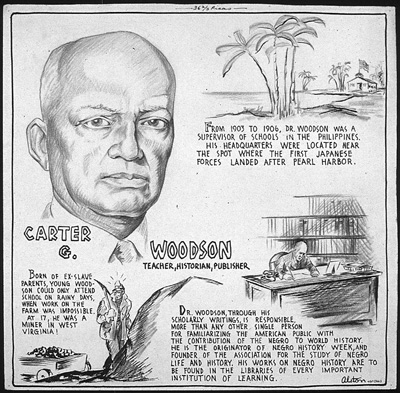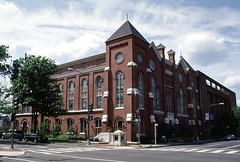Losing my religion: Shiloh Baptist Church and Neighborhood Destabilization
Last week's City Paper has an article entitled "Shaw’s Main Drag: Why has gentrification skipped 9th Street?" The article focuses on the impact of Shiloh Baptist Church on a big chunk of 9th Street NW, where they own a number of properties that are not in use. Many of these properties adjoin the National Park Service-owned Carter G. Woodson House. In 1915 Woodson and others founded the Association for the Study of Negro Life and History. Woodson helped create the Journal of Negro History, Negro History Week in 1926 (now known as "Black History Month" and celebrated each February), and in 1937 published the first issue of the Negro History Bulletin.

Here's my response, which I hope makes it in as a letter to the editor:
While I disagree with the term "gentrification" being used in the headline of the City Paper article, because neighborhood stabilization and improvement doesn't have to mean displacement, clearly Shaw Main Streets has its work cut out for it. Fortunately, they have able leaders and an executive director, Alexander Padro, who is a great organizer fully committed to asset-based urban revitalization and historic preservation.
From time to time on the National Main Street email list for practitioners of commercial district revitalization, we discuss the unintended consequences posed by having churches as part of the "mix of uses" that typifies traditional neighborhood and downtown commercial districts. Churches pose some tough issues for us.
One is that blue laws and the like precluding the sale of alcohol within a certain distance of churches and schools make it difficult to develop restaurants and similar uses. Commercial districts need restaurants in order to thrive because people need places to eat and yes, go to the restroom. Without restaurants, people's trips are in-and-out, focused on satisfying errands, quickly, and patrons don't take the time to linger and explore our commercial districts, and so they fail to learn about and patronize other retail and service options.
Furthermore, most restaurants need to be able to sell alcoholic beverages, if only to be on the same competitive keel compared to other restaurants, but also because it adds an often necessary revenue stream that the restaurant needs to be financially successful.
The District's strictures on the sales of alcoholic beverages within a certain distance of churches aren't as tough as other states because DC regulations allow obviating this rule especially when other alcohol sales establishments exist in the same area. Nonetheless, I think it would be reasonable to challenge such restrictions on the basis of Constitutional provisions precluding the mix of churchly business with state action.
Second, of 168 hours in a week, churches most often sit empty, as they are usually in prime use but a few hours per week, at times when the rest of the commercial district is idle (early Sunday morning). All too often, church buildings in commercial districts are activity vacuums that make a commercial district appear empty and unsafe.
Third, churches are well-known throughout the city (and nationally) for their "manifest destiny" inclinations, which are most often expressed through the acquisition of a great deal of property in the immediate vicinity of their houses of worship. According to the article, this appears to be an issue with Shiloh Baptist Church, but this church is merely one example of dozens.
It is perhaps counter-intuitive to say so, but I have come to the conclusion that many churches do not actively engage in stabilizing and improving their neighborhoods immediately adjacent because this gets in the way of property acquistion. Successful neighborhoods have more residents, increased demand, and higher property values, all of which make it more difficult for a church to continue to acquire property on the cheap.
Sadly, while improper maintenance of large property portfolios harms a neighborhood it appears to be a deliberate strategy that makes it easier for the church institution to do what it wants. This has been abetted by a general failure by the City's building inspection department to review inspect Church-owned properties and to fine Churches when they create and fail to abate nuisance properties.
In addition, church vestry often hold suburban land use planning and design paradigms which are counter to sustaining and extending neighborhood improvements in urban areas such as the City of Washington. I can provide five examples of churches demolishing historic buildings in favor of often illegal parking lots. How does paving over houses for car usage a few hours per week help rebuild neighborhoods?
 Shiloh Baptist Church, 9th Street NW. The relatively new construction of the Family Life Center is to the right in the photo. Photo source: www.soulofamerica.com
Shiloh Baptist Church, 9th Street NW. The relatively new construction of the Family Life Center is to the right in the photo. Photo source: www.soulofamerica.comShouldn't a Church properly steward all of the properties it owns?



0 Comments:
Post a Comment
<< Home